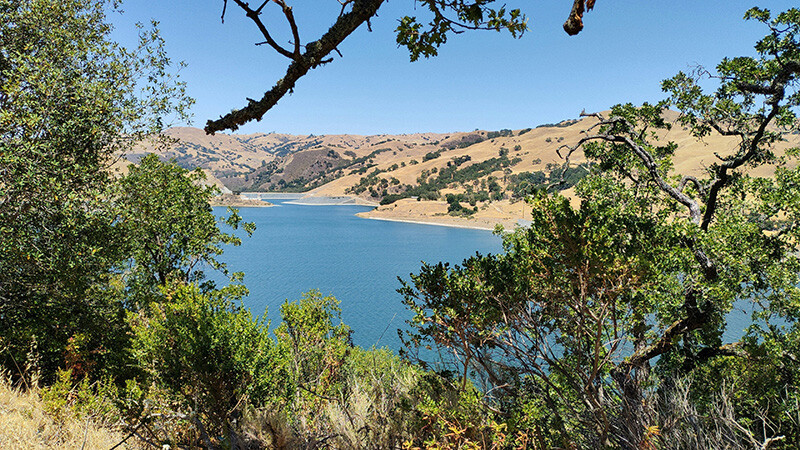Whether you are a landowner considering selling, a developer planning a new project, or a buyer looking to invest in the Golden State, understanding water resources is essential. This short guide provides an overview of how groundwater, surface water, and riparian rights impact land values and development. You’ll also find a list of important online resources to reference for land transactions.
Contents
Overview
Groundwater and SGMA
Surface Water
Riparian Rights
California Water: Online Resources for Land Transactions
Overview
Beyond rainfall, there are three main sources of water to consider when owning land in California: well water from subterranean sources, surface water which comes from lakes and reservoirs, and riparian water from streams and waterways. These water sources are managed and administered by a variety of organizations, from local associations to state entities and federal agencies. Sometimes, who manages your water is just as important as where it comes from.
Groundwater and SGMA
Groundwater is essential to California's farmland, supplying drinking water, and the environment. According to the state's California Groundwater Live website, groundwater accounts for 40% of the state's annual water supply in normal years and 60% in drought years.
Over-extraction has led to serious environmental concerns and land subsidence, which causes the ground to sink. As a result, California implemented the Sustainable Groundwater Management Act (SGMA).
SGMA is a California state law enacted in 2014 to ensure sustainable management of groundwater resources. The law mandates the formation of local Groundwater Sustainability Agencies (GSAs) to develop and implement Groundwater Sustainability Plans (GSPs) to prevent:
- Significant and unreasonable declines in groundwater levels
- Reductions in groundwater storage
- Intrusion of seawater
- Degradation of water quality
- Subsidence of land
- Depletion of interconnected surface waters
SGMA affects land values by imposing regulations on groundwater pumping, particularly in areas reliant solely on groundwater. Properties without surface water resources that utilize only well water are sometimes referred to as “white areas.” Restrictions on groundwater use can reduce the viability of agricultural operations, leading to decreased land values.
Surface Water
Access to surface water is another critical factor influencing land values and the feasibility of development projects. In California, surface water is typically water impounded in lakes and reservoirs, which collect snowmelt and rainfall from the mountains. This water is released from reservoirs and delivered to properties through an intricate canal system.
The California State Water Resources Control Board issued curtailments on surface water diversions during times of scarcity, especially affecting those with junior water rights. Environmental regulations aimed at protecting endangered species and habitats have imposed additional restrictions, requiring certain flow levels to be maintained for ecological purposes.
These factors contribute to decreased reliability of surface water access, which impacts land values. Landowners may also face increased costs as they invest in alternative water sources or technologies to enhance water efficiency.
Riparian Rights
Riparian rights are legal entitlements allowing landowners whose property borders a natural watercourse to make reasonable use of the water. These rights can enhance property value by providing access to surface water for irrigation, livestock, or domestic use. However, riparian rights come with responsibilities and limitations, such as not diminishing water quality or quantity for downstream users.
Understanding riparian rights is important for both sellers and buyers. These rights typically transfer with property ownership, potentially increasing the property's value.
California Water: Online Resources for Land Transactions
When engaging in land transactions in California, understanding the state's water resources is crucial. Water rights, availability, and regulations can significantly impact property values and development potential. Below are important online resources to assist buyers, sellers, and developers in navigating California's complex water landscape.
1. California Department of Water Resources (DWR)
The DWR provides extensive information on water resources, management plans, and regulatory frameworks.
2. State Water Resources Control Board (SWRCB)
The SWRCB oversees water rights and water quality regulations in California, making it a critical resource for understanding legal obligations related to water use on a property. You can also use the eWRIMS Database to search for water rights records, and you can find specific water boards via the Regional Water Quality Board Directory.
3. Groundwater Sustainability Agencies (GSAs)
Under the Sustainable Groundwater Management Act (SGMA), GSAs are responsible for managing groundwater resources in their designated areas. The SGMA Portal provides detailed information on GSAs.
4. Local Water Agencies and Irrigation Districts
Local agencies are primary sources of information on water availability, infrastructure, and any restrictions that may impact a property. You can contact local districts for specifics on surface water delivery and rights. You can find a directory on the Association of California Water Agencies (ACWA) website.
5. California Environmental Quality Act (CEQA)
CEQA requires environmental impact assessments for development projects, including evaluations of water supply and quality. Details can be found on the CA Governor's Office of Land Use and Climate Innovation website.
6. Mapping and Data Resources
Accurate mapping tools are essential for evaluating water resources and risks associated with a property.
- Acres.com: Maps and Data for Land People
- Parcel-level maps and contact information for Water Districts, SGMA Priority, GSA, and Adjudicated Basins.
- California Natural Resources Agency Open Data Portal
- California Environmental Geoportal
- Spatial data on water resources, environmental concerns, and land use.
7. California Water Watch
The California Water Watch provides information on current conditions on a regional and local level.
Final Thoughts
Water rights, availability, and regulations profoundly impact property values and the feasibility of development. By staying informed about groundwater issues like those addressed by SGMA, recognizing the importance of surface water and riparian rights, and utilizing available online resources, landowners, buyers, and developers can make informed decisions.
Proactively engaging with these factors not only safeguards your investments but also contributes to the sustainable management of California's vital water resources.
